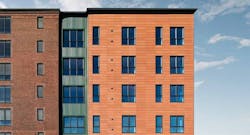The concept of “passive house” originated in North America in response to the OPEC oil embargo of 1973 and the subsequent energy crisis. At that time, the U.S. Department of Energy and its counterpart in Canada started promoting cost-effective, “passive” energy-conservation measures—insulating buildings better, halting air leakage in the envelope, installing energy-efficient glazing.
Once the oil embargo was lifted, in March 1974, America’s homebuilders quickly fell back to erecting energy hogs. In 1991 Swedish academic Bo Anderson and German physicist Wolfgang Feist designed the world’s first passivhaus (the German term)—a four-unit row house in Darmstadt, Germany. Five years later Feist established the Passivhaus Institute (PHI), which developed the Passivhaus Standard for certifying buildings. Since 1996, PHI has certified about a thousand projects in Europe.
After you have read and studied the text, you should be able to:
• Discuss briefly the history of passive house design in the U.S. and Europe.
• Describe the key elements of passive house design to qualify for passive house certification.
• List types of insulation and wall assemblies that can be used in passive house multifamily projects.
• Quantify the recommended heat energy savings, cooling energy savings, and total energy savings for passive house design.
